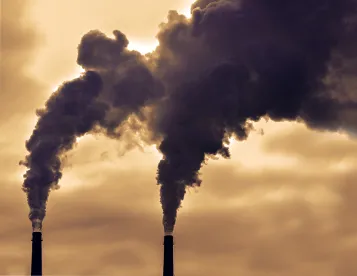A new policy memorandum means that some proposed projects at large-emitting facilities would not be subject to major clean air new source review obligations.
New source review (NSR) is a program that involves a complex applicability evaluation and can impose significant pre-construction permitting, pollution control, and recordkeeping and reporting obligations on major sources of emissions. US Environmental Protection Agency (EPA) Administrator Scott Pruitt has issued a new policy memorandum that marks a significant shift in EPA’s existing interpretation of its NSR rules with respect to whether a proposed project triggers NSR requirements.[1] The memo provides for consideration of emissions decreases at an earlier stage in the applicability analysis, and is likely to result in additional projects falling outside the scope of this program. The administrator’s memorandum states that it is part of a broader initiative by the Trump administration to streamline regulatory permitting and related requirements for manufacturing and other facilities, including under the Clean Air Act’s New Source Review program.[2]
BACKGROUND
EPA’s NSR rules provide that a project can trigger NSR requirements only if it causes both a significant emissions increase and a significant net emissions increase as defined under the rules. This entails a two-step process: In Step 1, facilities examine the emissions projected to result from the proposed project, by itself, to determine if they reach regulatory “significant” levels; if so, then the process moves to Step 2, in which facilities evaluate “contemporaneous” emissions increases and decreases source-wide (including from other projects), in a process referred to as “netting,” to determine if the project would also cause a significant net emissions increase. If Steps 1 and 2 result in a determination that emissions are significant and a significant net emissions increase, respectively, the pre-construction permitting, control technology, and related requirements of major NSR are triggered.
Under the Obama administration, reversing certain Bush-era policy, EPA interpreted Step 1 to preclude what was referred to as “project netting,” the consideration of both emissions increases and decreases resulting from the project itself. [3] Instead, under this interpretation, at this first stage in the analysis, only emissions increases were to be considered in evaluating whether a project reached significant emissions levels and whether the project was required to move on to Step 2 (the source-wide netting analysis) to determine if it might “net out” of major NSR.
THE EPA POLICY MEMORANDUM
EPA’s new policy memorandum marks an important shift in the methodology for calculating whether a project would result in a significant emissions increase at Step 1 of the NSR applicability analysis. Relying on certain rule language and regulatory and legislative history, EPA finds that under its current NSR regulations, both emissions increases and decreases resulting from a proposed project may be considered in Step 1, in what the agency now calls “project emissions accounting”— “i.e., taking account of the true emissions impacts of the project itself.” EPA believes that its prior interpretation had the effect of blocking certain projects and significantly delaying others, “even though those projects would not have resulted in a significant emissions increase” if considering both emissions increase and decreases at Step 1 of the analysis. “The EPA recognizes that because of the inherent complexities associated with doing multi-year contemporaneous netting under Step 2 at a large facility, some companies may have been dissuaded from undertaking some projects,” even if those projects may have resulted in increased efficiency and reduced emissions.
IMPLICATIONS
EPA’s policy memorandum signals that facilities may now take into consideration emissions-decreasing aspects of projects at Step 1 of the NSR applicability analysis, and not just at the Step 2, netting stage. Under the new policy, it may therefore be prudent for facilities to yet more carefully define and review the scope of projects to determine if they entail emissions-reducing activities, and if so, to consider these emissions decreases at Step 1 of the NSR applicability review process in permitting and related documentation. However, while EPA’s interpretation governs its own permitting actions, states and local air pollution control agencies with authority to administer their own or delegated programs may still have differing interpretations on these issues.
[1] Memorandum from E. Scott Pruitt, Administrator, to Regional Administrators, Regarding Project Emissions Accounting Under the New Source Review Preconstruction Permitting Program (Mar. 13, 2018).
[2] See, e.g., Memorandum from E. Scott Pruitt, Administrator, to Regional Administrators, Regarding New Source Review Preconstruction Permitting Requirements: Enforceability and Use of the Actual-to-Projected-Actual Applicability Test in Determining Major Modification Applicability (Dec. 7, 2017).
[3] See, e.g., Letter from Barbara A. Finazzo, Director, Division of Environmental Planning and Protection, EPA Region 2, to Kathleen Antoine, Environmental Director, HOVENSA, L.L.C., Re: HOVENSA Gas Turbine Nitrogen Oxides (GT-NOx) Prevention of Significant Deterioration (PSD) Permit Application – Emission Calculation Clarification, Mar. 30, 2010.




 />i
/>i

